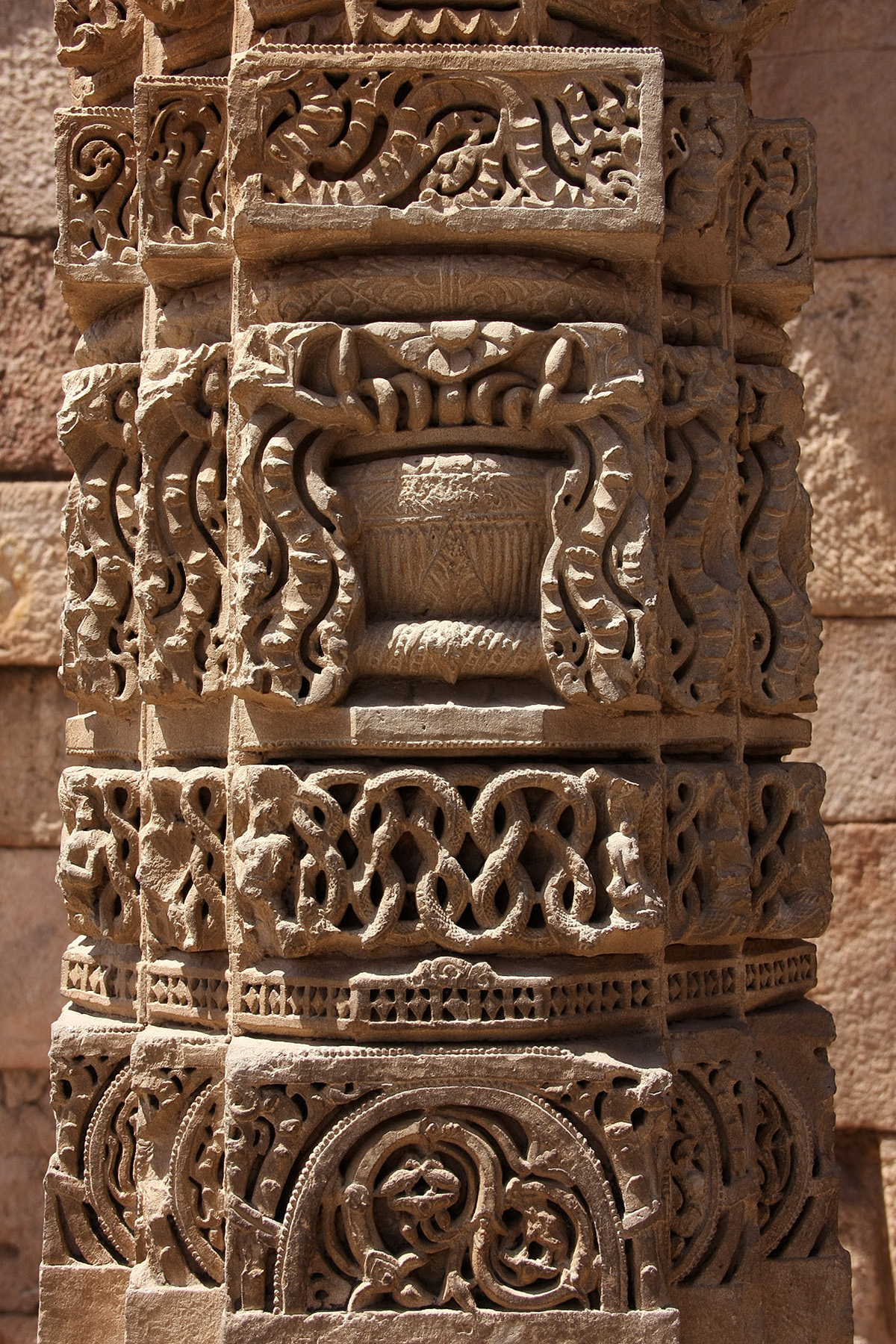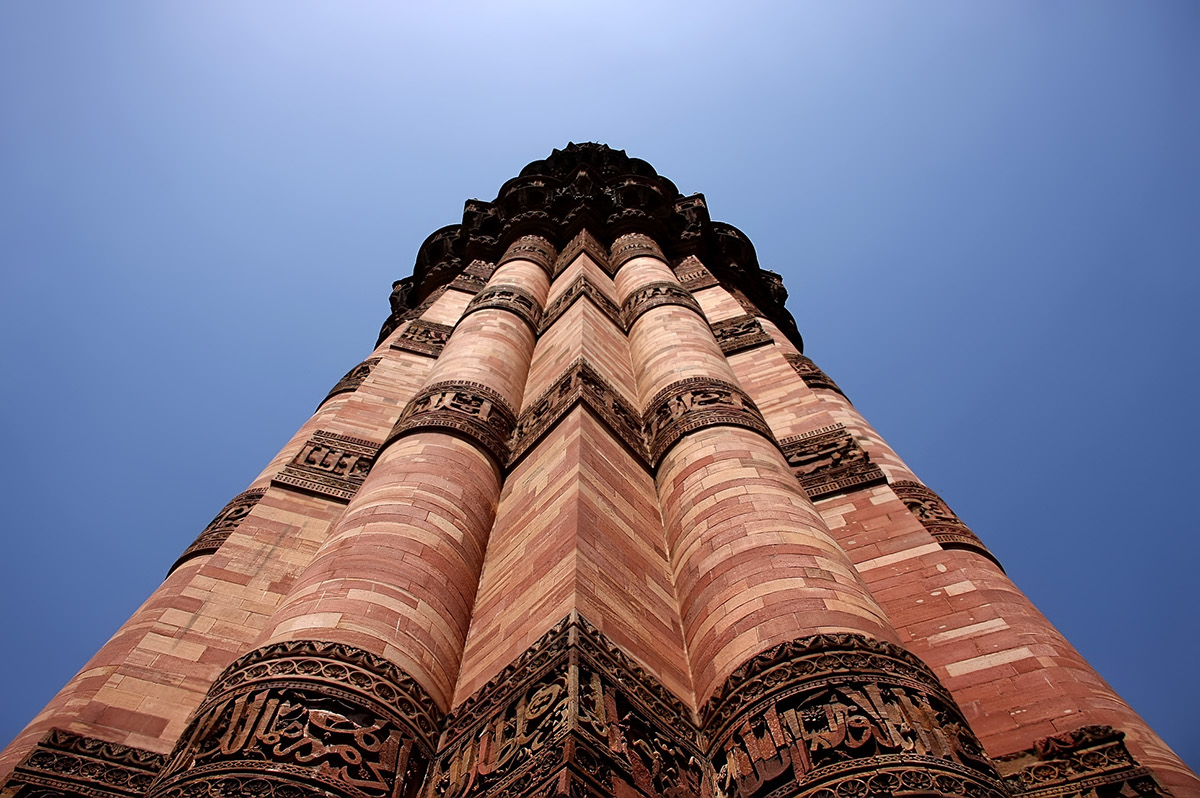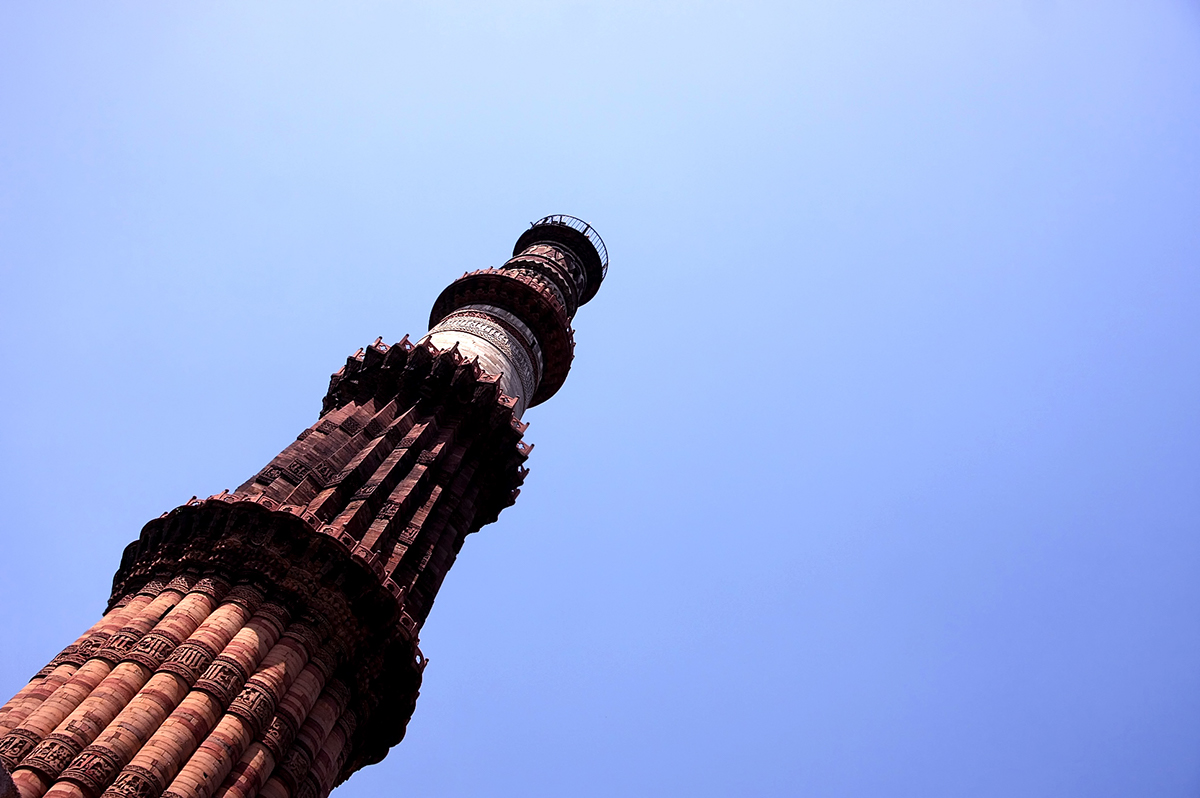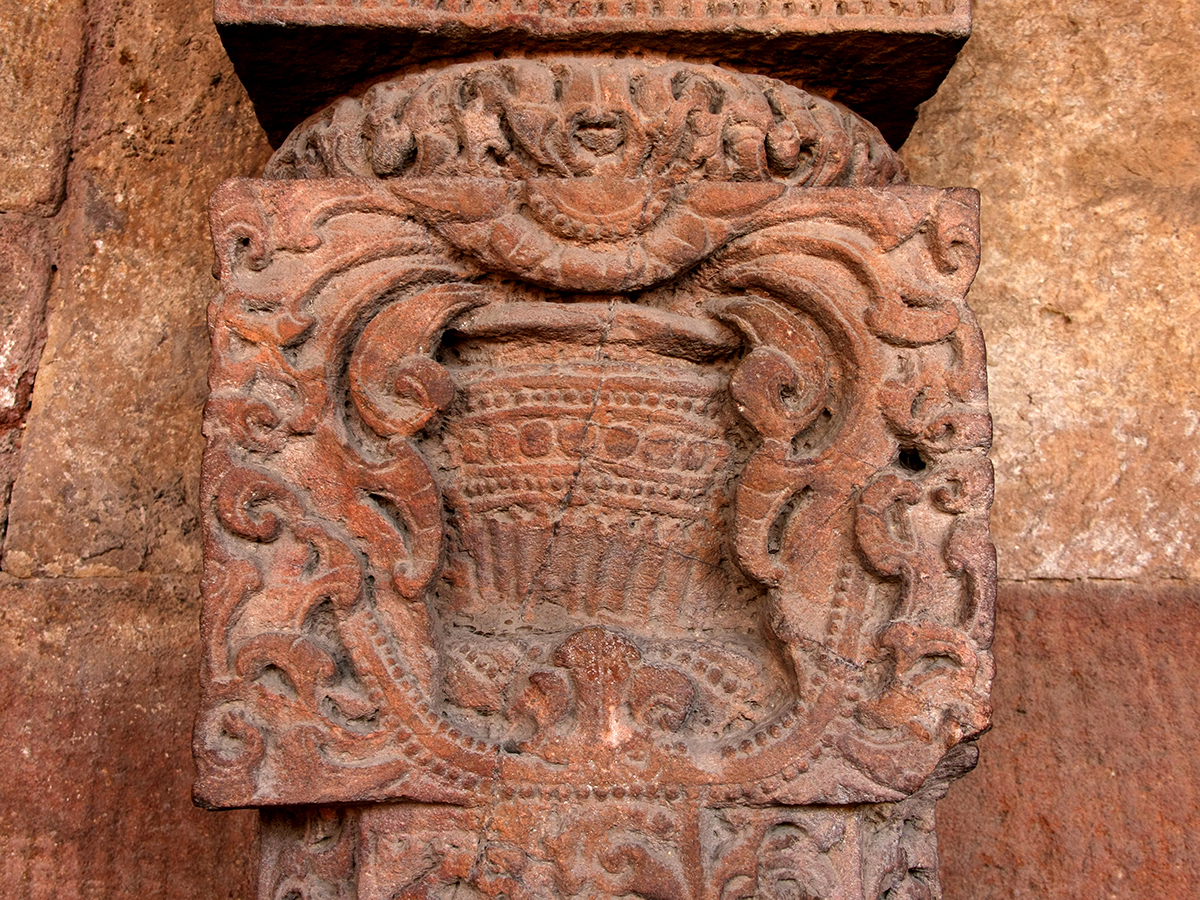Qutb Minar, at 120 meters, is the tallest brick minaret in the world. Qutub Minar, along with the ancient and medieval monuments surrounding it, form the Qutub Complex, which is a UNESCO World Heritage Site.
Architecture
The tower's style is patterned on Afghanistan's Minaret of Jam, and adapted to local artistic conventions by the incorporation of "looped bells and garlands and lotus borders into the carving". Numerous inscriptions in Parso-Arabic and Nagari characters in different sections of the Qutb Minar reveal the history of its construction, and the later restorations and repairs by Firoz Shah Tughluq (1351–89) and Sikandar Lodi (1489–1517).
The tower has five superposed, tapering storeys. The lowest three comprise fluted cylindrical shafts or columns of pale red sandstone, separated by flanges and by storeyed balconies, carried on Muqarnas corbels. The fourth column is of marble, and is relatively plain. The fifth is of marble and sandstone. The flanges are a darker red sandstone throughout, and are engraved with Quranic texts and decorative elements. The whole tower contains a spiral staircase of 379 steps. At the foot of the tower is the Quwat ul Islam Mosque. The minar tilts just over 65 cm from the vertical, which is considered to be within safe limits, although experts have stated that monitoring is needed in case rainwater seepage further weakens the foundation.
Qutb Minar was an inspiration and prototype for many minarets and towers built after it. Chand Minar and Mini Qutub Minar bears resemblance to the Qutb Minar and was inspired from it.















